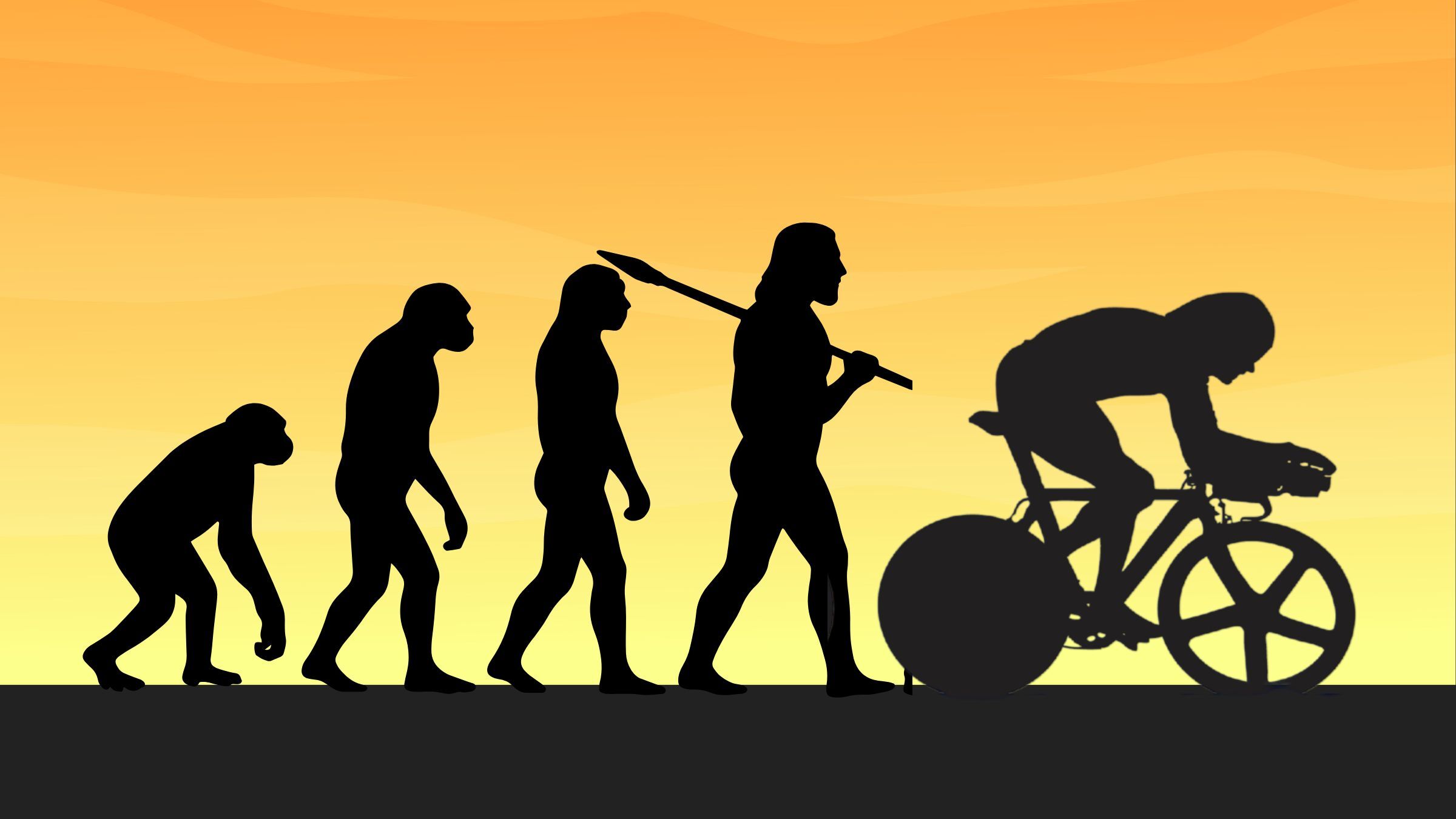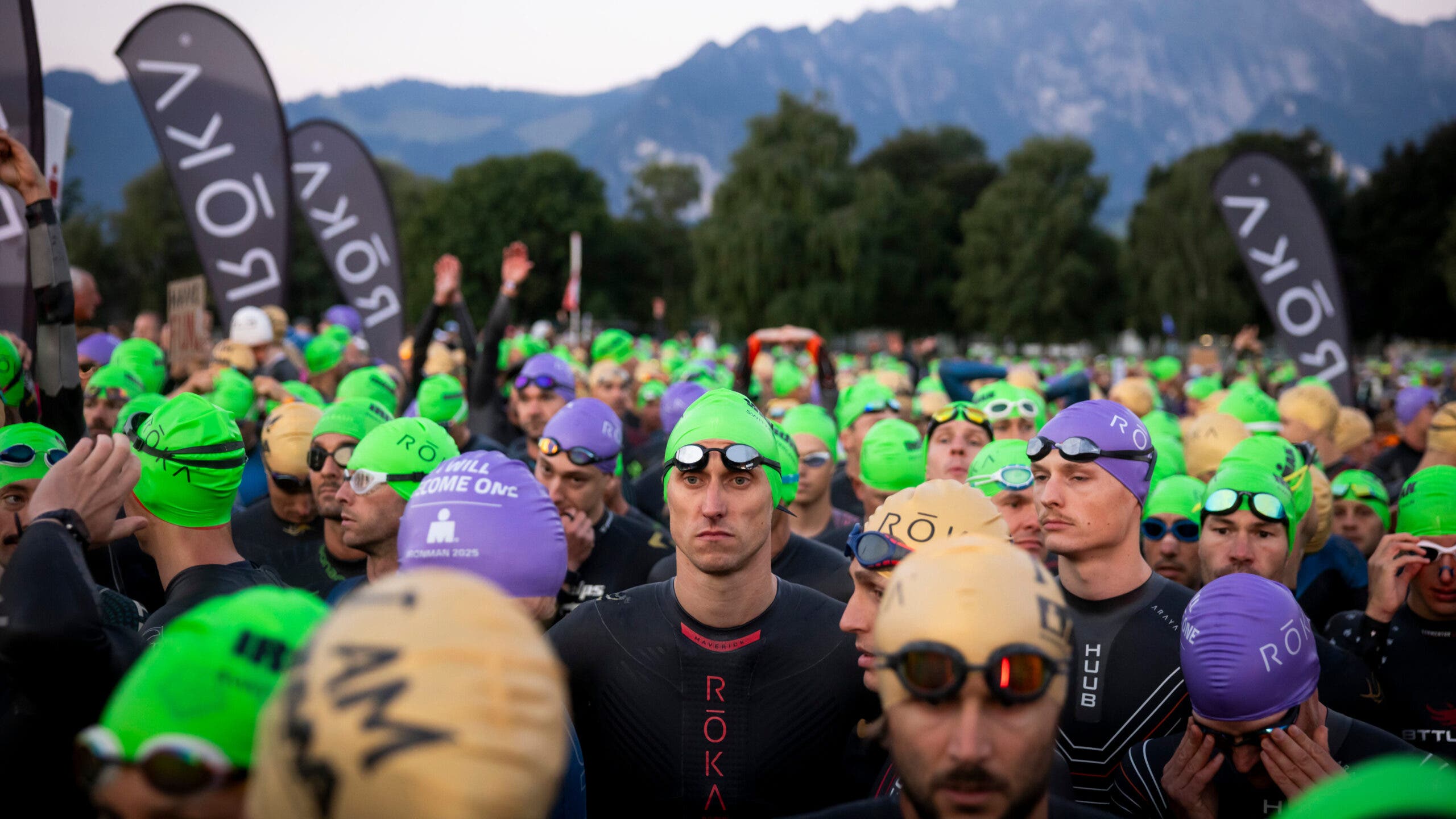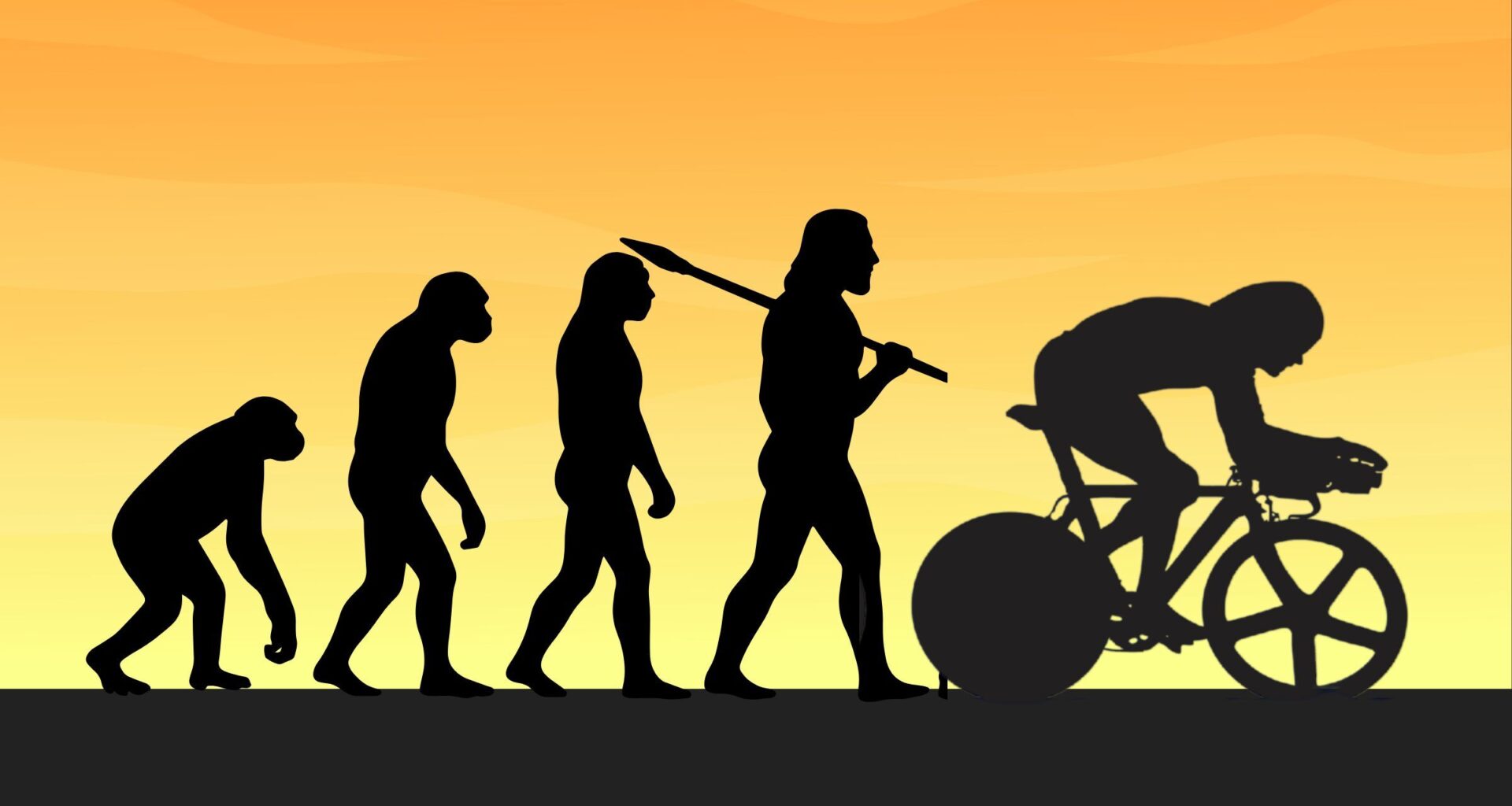A recent study peers deep into the family tree to find a Neanderthal mutation – present in 20% of modern humans – might be detrimental to endurance athletic performance.

A Neanderthal mutation might be detrimental to endurance athletic performance. Dig deeper into the research and how to know if you have the gene. (Photo: Triathlete)
Published October 16, 2025 07:11AM
In the 1992 film “Encino Man,” a long-dormant Neanderthal (played by Brendan Fraser) resurfaces after an earthquake and thaws out in late-20th-century southern California. With the assistance of two teenagers (played by Pauly Shore and Sean Astin), the caveman, now named Link, enrolls in high school and hilarity ensues.
Universally panned by critics, “Encino Man” nevertheless boomed at the box office, in part because of how the film played with the vastly different yet oh-so-similar comparison of Link to his modern-day counterparts.
What wasn’t known at the time the film was made is that all three lead characters quite possibly carry some Neanderthal DNA in their own cells. You possibly do, too – and new science shows it may impact your performance as an endurance athlete.
Your Neanderthal DNA
Neanderthals, while eerily human-like in many ways, are very definitely not homo sapiens. But the two species coexisted on planet Earth for several thousand years. This was roughly 40,000 to 50,000 years ago, long before Tinder and Hinge; nevertheless, members of the two populations sometimes got freaky together. Today, buried deep in modern human DNA lies undeniable, enduring evidence that Neanderthals and homo sapiens interbred.
It’s believed that 20% of the Neanderthal genome lives on in the modern human gene pool, and for some humans, that means up to about 2% of their genes come from Neanderthals.
Several direct-to-consumer DNA testing companies look for these markers in the cheek swabs and spit samples they analyze. This means that when you get your report back, you might find that you’ve got French, German, Polish, and Neanderthal ancestry, for example.
For most people, this is just a point of interest that has little bearing on their day-to-day existence, besides suggesting why their hair has a certain texture or they have other physical traits. Currently, there’s limited research that shows having Neanderthal ancestry changes an individual’s disease risk profile, but so far, there’s been little actionable information that can be gleaned from analyzing such genetic variations.
But research into Neanderthal genes and their influence on human carriers continues. One particularly interesting study published July 2025 in the journal Nature Communications suggested that a specific Neanderthal gene variant holds what sounds like dire implications for carriers who are aiming to engage in endurance or power sports activities.
The missing endurance enzyme
 20% of the Neanderthal genome lives on in the modern human gene pool, and new research finds those who carry a specific variant were half as likely to become top athletes in endurance and power sports as those without the variant. (Photo: Jan Hetfleisch/Ironman)
20% of the Neanderthal genome lives on in the modern human gene pool, and new research finds those who carry a specific variant were half as likely to become top athletes in endurance and power sports as those without the variant. (Photo: Jan Hetfleisch/Ironman)
In conjunction with researchers at the Okinawa Institute of Science and Technology and Sweden’s Karolinska Institute, the study was conducted at the Max Planck Institute for Evolutionary Anthropology in Leipzig, Germany, one of the foremost institutions investigating the connection between Neanderthals and humans. It was there in 2006 that Nobel Prize-winning scientist Svante Pääbo initiated the “Neandertal Genome Project,” which led to sequencing the entire Neanderthal genome in 2008. Ever since, the lab has continued peering into the genetic code of archaic peoples.
This study, led by Dominik Macak, a PhD candidate at the Max Planck Institute, looked at 2,700 individuals and found that those who carried a specific Neanderthal gene variant were half as likely to become top athletes in endurance and power sports as those without the variant.
That’s because the variant can alter the body’s ability to generate energy during intense exercise. During exercise, cells break down a molecule called adenosine triphosphate. ATP is often referred to as the “body’s batteries,” and it’s created by turning two molecules of adenosine diphosphate (ADP) into one molecule of ATP and one molecule of adenosine monophosphate (AMP).
The ATP is used to power skeletal muscle movement and is especially important in endurance and strength-based activities. The AMP molecule, on the other hand, is a byproduct that’s discarded through the action of an enzyme called AMPD1.
AMPD1 is a key enzyme, and mutations that impair its function are the most common cause of metabolic myopathy, a group of genetic disorders that interfere with muscle cell energy production. Metabolic myopathies affect 9% to 14% of people of European ancestry and can cause heart problems, make receiving anesthesia dangerous, and cause exercise intolerance.
Symptom severity can range from no symptoms at all to very severe muscle symptoms where the individual cannot exercise at all, depending on many other environmental and genetic factors.
Production of this enzyme is impaired in those with the Neanderthal gene variant.
To discover this, the researchers recreated the Neanderthal version of the AMPD1 enzyme and tested it in the lab. Under those conditions, they found Neanderthal AMPD1 was 25% less active than the same enzyme produced in humans with other variants of the gene.
Then, the researchers genetically engineered mice to express the Neanderthal version of AMPD1 and found that the impact was even greater than in the lab; the Neanderthal version of the enzyme was 80% less active than the non-Neanderthal variant.
The issue is that the enzyme impairment allows AMP to build up in the person’s muscles, making it more difficult for them to produce ATP as fast as it’s needed by the cells. This isn’t usually a problem, as most processes are powered by other energy sources. But for people engaging in endurance sports or exercises that demand muscle power, this impairment likely limits their capacity to do that work.
The researchers assessed the prevalence of the gene among elite athletes and non-athletes and found that 4% to 14% of athletes carried this genetic variant, while 9% to 19% of non-athletes had the variant. Individuals can inherit one or two copies of the gene variant, depending on whether one or both parents are carriers. People who carried just one copy of the Neandertal gene had a 50% lower likelihood of achieving elite athletic status.
Sounds grim, doesn’t it? But take heart – even if you have this genetic mutation, it’s unlikely to cause you any real issues. “What this study shows is there are certain genetic variants that exist within us that, on a regular day-to-day basis, show no effect. But when you put them in a certain context – like this protein in the context of sport where you want to achieve high muscular power – then the effect becomes clear,” Macak explains.
So, this common mutation is unlikely to cause any health issues or major limitations for most people, even the most ardent triathlete.
Maximizing your genetic makeup
So what does this all mean for you as an endurance athlete?
There’s really no need to test for a variation, unless you are having symptoms that might indicate the presence of a metabolic myopathy. While the mutation evidently reduces the likelihood of becoming an elite athlete by half, there are many other factors that influence athletic performance, including some 200 genes, Macak says.
Not all of those other genes have been well-studied yet, and there are other aspects that also come into play: nutrition, psychology, and the environment in which you’re competing, for starters.
Why this variation arose in the first place is also still under scrutiny. “It’s very fascinating that these mutations arose because there doesn’t seem to be an obvious advantage to them,” Macak says. “But we’re working to figure that out.”
Macak adds that it’s very unlikely that this single mutation caused the Neanderthals to die out because it existed for so long and is present in all of the Neanderthal samples they’ve tested, which span the globe and eons. “If this mutation would cause you to not be able to hunt your food, then it wouldn’t have lasted for tens of thousands of years,” he reasons.
All Neanderthals appear to have had this genetic variant; today, it’s found in up to 8% of Europeans, 3% of Native Americans, and 2% of South Asians. It’s apparently absent in Africans, East Asians, and African-Americans.
If, for some reason, you know you have this genetic variation, there’s not much you can do about it. But Macak recommends adopting a personalized training plan and addressing any muscle-related symptoms you might experience, such as cramps or fatigue.
Nutritionally, there’s not much guidance available either, except to ensure good nutritional practices (more on that here). “The condition of being deficient of this enzyme has been known since the ’70s, and there are currently no nutritional recommendations for this disease,” he notes.
Nevertheless, don’t let a pesky genetic variant keep you from trying a triathlon or any other endurance or power sport you want to pursue. “I would never discourage someone who knows they have this mutation to not give it a go,” he says.
Although having this variant suggests you’re less likely to end up as an elite athlete, that’s not an absolute certainty. And it also doesn’t mean you can’t still have a great time competing at the level you can achieve.
After all, if Encino Man can wake up 40,000 years after being entombed in an ice cave, then anything is possible.

